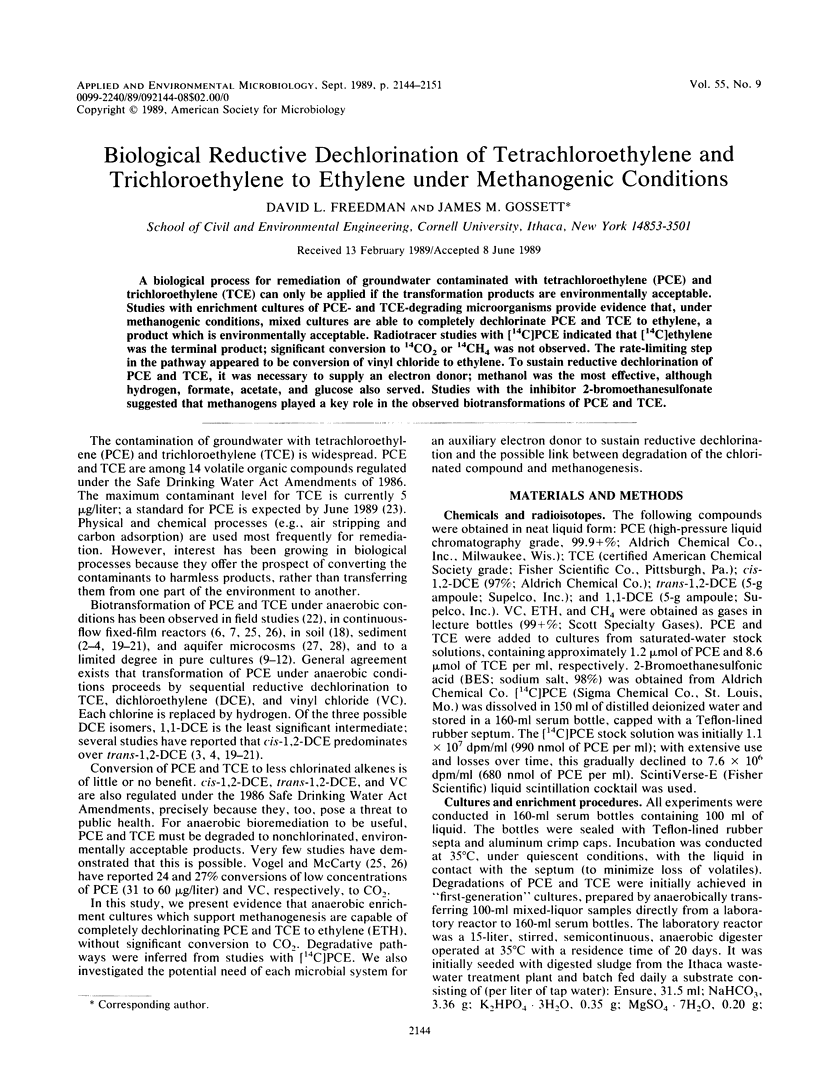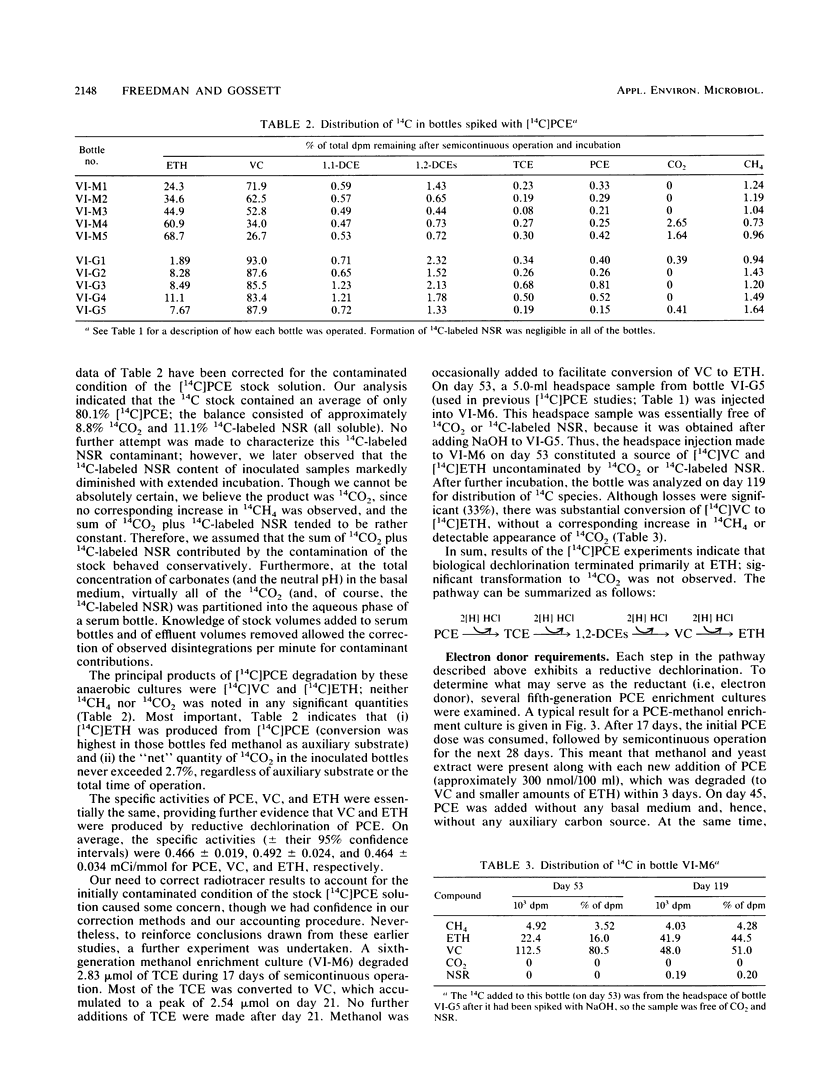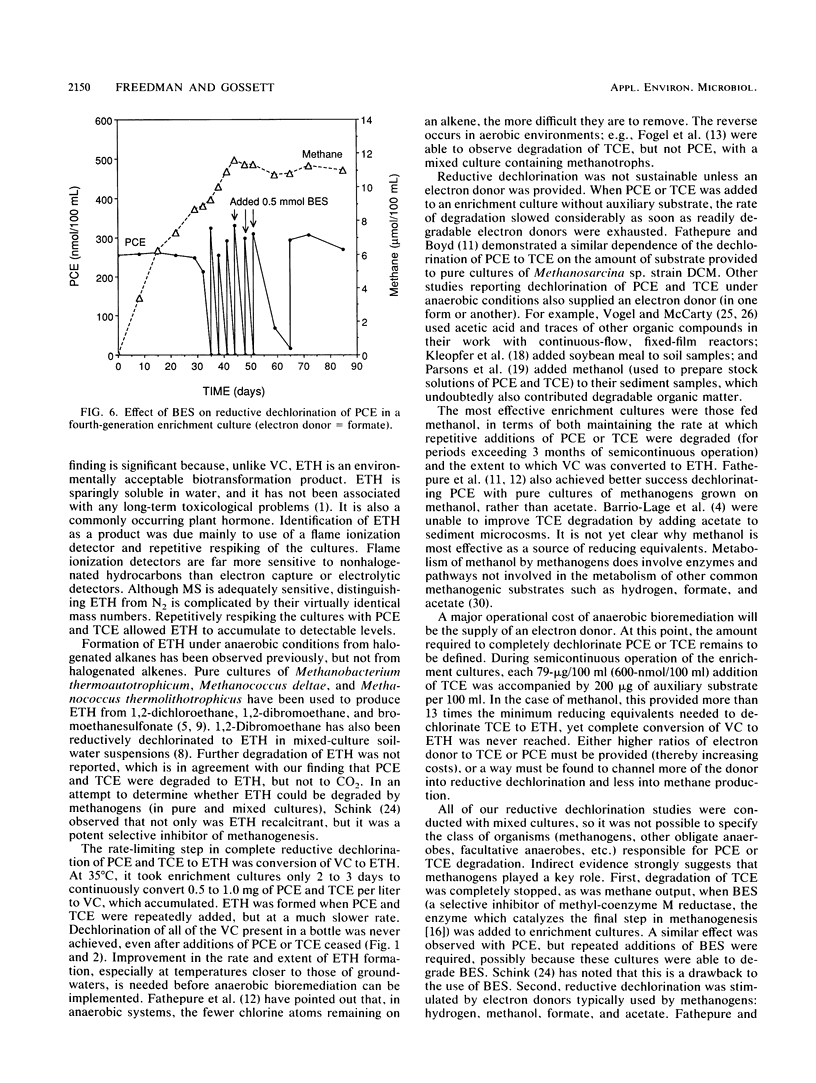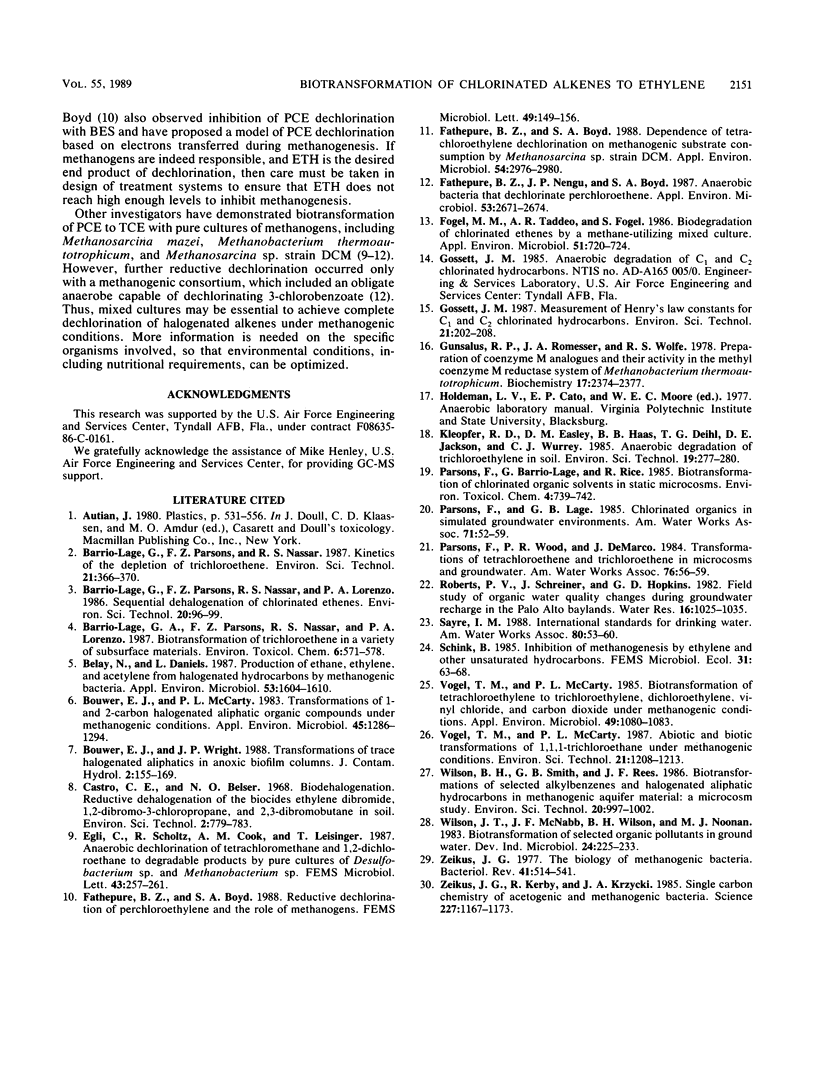Abstract
A biological process for remediation of groundwater contaminated with tetrachloroethylene (PCE) and trichloroethylene (TCE) can only be applied if the transformation products are environmentally acceptable. Studies with enrichment cultures of PCE- and TCE-degrading microorganisms provide evidence that, under methanogenic conditions, mixed cultures are able to completely dechlorinate PCE and TCE to ethylene, a product which is environmentally acceptable. Radiotracer studies with [14C]PCE indicated that [14C]ethylene was the terminal product; significant conversion to 14CO2 or 14CH4 was not observed. The rate-limiting step in the pathway appeared to be conversion of vinyl chloride to ethylene. To sustain reductive dechlorination of PCE and TCE, it was necessary to supply an electron donor; methanol was the most effective, although hydrogen, formate, acetate, and glucose also served. Studies with the inhibitor 2-bromoethanesulfonate suggested that methanogens played a key role in the observed biotransformations of PCE and TCE.
Full text
PDF







Selected References
These references are in PubMed. This may not be the complete list of references from this article.
- Belay N., Daniels L. Production of ethane, ethylene, and acetylene from halogenated hydrocarbons by methanogenic bacteria. Appl Environ Microbiol. 1987 Jul;53(7):1604–1610. doi: 10.1128/aem.53.7.1604-1610.1987. [DOI] [PMC free article] [PubMed] [Google Scholar]
- Bouwer E. J., McCarty P. L. Transformations of 1- and 2-carbon halogenated aliphatic organic compounds under methanogenic conditions. Appl Environ Microbiol. 1983 Apr;45(4):1286–1294. doi: 10.1128/aem.45.4.1286-1294.1983. [DOI] [PMC free article] [PubMed] [Google Scholar]
- Fathepure B. Z., Boyd S. A. Dependence of tetrachloroethylene dechlorination on methanogenic substrate consumption by Methanosarcina sp. strain DCM. Appl Environ Microbiol. 1988 Dec;54(12):2976–2980. doi: 10.1128/aem.54.12.2976-2980.1988. [DOI] [PMC free article] [PubMed] [Google Scholar]
- Fathepure B. Z., Nengu J. P., Boyd S. A. Anaerobic bacteria that dechlorinate perchloroethene. Appl Environ Microbiol. 1987 Nov;53(11):2671–2674. doi: 10.1128/aem.53.11.2671-2674.1987. [DOI] [PMC free article] [PubMed] [Google Scholar]
- Fogel M. M., Taddeo A. R., Fogel S. Biodegradation of chlorinated ethenes by a methane-utilizing mixed culture. Appl Environ Microbiol. 1986 Apr;51(4):720–724. doi: 10.1128/aem.51.4.720-724.1986. [DOI] [PMC free article] [PubMed] [Google Scholar]
- Gunsalus R. P., Romesser J. A., Wolfe R. S. Preparation of coenzyme M analogues and their activity in the methyl coenzyme M reductase system of Methanobacterium thermoautotrophicum. Biochemistry. 1978 Jun 13;17(12):2374–2377. doi: 10.1021/bi00605a019. [DOI] [PubMed] [Google Scholar]
- Vogel T. M., McCarty P. L. Biotransformation of tetrachloroethylene to trichloroethylene, dichloroethylene, vinyl chloride, and carbon dioxide under methanogenic conditions. Appl Environ Microbiol. 1985 May;49(5):1080–1083. doi: 10.1128/aem.49.5.1080-1083.1985. [DOI] [PMC free article] [PubMed] [Google Scholar]
- Zeikus J. G., Kerby R., Krzycki J. A. Single-carbon chemistry of acetogenic and methanogenic bacteria. Science. 1985 Mar 8;227(4691):1167–1173. doi: 10.1126/science.3919443. [DOI] [PubMed] [Google Scholar]
- Zeikus J. G. The biology of methanogenic bacteria. Bacteriol Rev. 1977 Jun;41(2):514–541. doi: 10.1128/br.41.2.514-541.1977. [DOI] [PMC free article] [PubMed] [Google Scholar]


